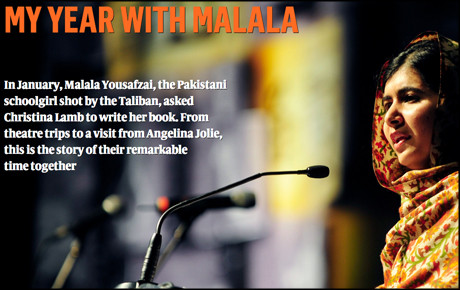
The Times is developing a "suite of tools" to allow the newsroom to produce multimedia articles quickly and easily in the future.
In a post published on The Times Digital Development blog yesterday, Joseph Stashko, digital news development editor, and news developer Ændrew Rininsland explain how a recent article, 'My Year with Malala', was built using WordPress and Twitter Bootstrap tools.
"We're not at the stage at the moment where putting together a long-form piece like Malala can be done easily with a template," Stashko told Journalism.co.uk. "But it's definitely what we're aiming for. Right now we just want to review and refine the process, and start thinking about how we turn what we've built into a tool for the newsroom."
'My Year with Malala' was published on Sunday, October 13, in print and online, and tells the story of Malala Yousafzai, the Pashtun schoolgirl who was shot in the head on her way to school by the Taliban in October 2012.
Currently available outside of the News UK paywall, the article bears many of the hallmarks of modern, 'rich-content' articles, integrating video footage and large photographs into a scrolling, long-form read.
The Sunday Times's foreign correspondent, Christina Lamb, spent most of 2013 with Malala and her family for a recently published book. This article highlights some key moments during that time to give a fuller picture of the girl who speaks at the UN and has dinner with Angelina Jolie between physics homework and playing cricket with her brothers.
"The Times and Sunday Times both do excellent long-form pieces every week and we see it as an opportunity to make more frequent and detailed long-from articles instead of just a giant push every three months," Stashko said.
"If we refine these tools and even get to the point where we can pass things over to the journalist to do themselves, if it's that simple, then that would be the end goal."
Stashko and the digital development team spent two weeks writing the code and building the tools in WordPress, including custom widgets for using video and images to fit the whole page.
"I'd stress that this is still at an early stage," he said, explaining how he hopes to create "a font library so we don't have to consult with the design team as to what font is appropriate for each style of header or body or text".
"Having built this piece we now know what's difficult and we know what's easy," Stashko said. "So it's given us a clearer idea of what to work towards in the future."
The "end goal" is to have a directory for each publication which would then automatically add the style features. At present, although the first iteration of tools have been developed, the process of building each article can still take a long time.
"We want to develop a suite of tools that will help with putting this stuff together in a much easier way in the future," Stashko said. "Creating a set of tools is the most important thing for the future really."
Although there is no set timetable, Stashko said the team would experiment several times over the coming months. And if multimedia interactions were built into the commissioning stage of the process, he said it could make producing these types of stories more "normalised" in the newsroom.
"One-of-a-kind custom pieces are still interesting," he said, "but because there's so much long-form in both publications – that is put out on a consistent basis – it would be a shame not to build a tool which seeks to serve that, rather than just always spending tons of time and resources on one flagship piece every six months."
Free daily newsletter
If you like our news and feature articles, you can sign up to receive our free daily (Mon-Fri) email newsletter (mobile friendly).
Related articles
- What AI can do for your newsroom: tips from Ring Publishing's latest handbook
- 200 speakers you need at your next journalism event to avoid all-male panels
- How young leaders can shape the future of the media industry
- Tools, tactics, and success stories of newsroom innovation in 2023
- How news brands can win over young audiences, with Danuta Breguła









